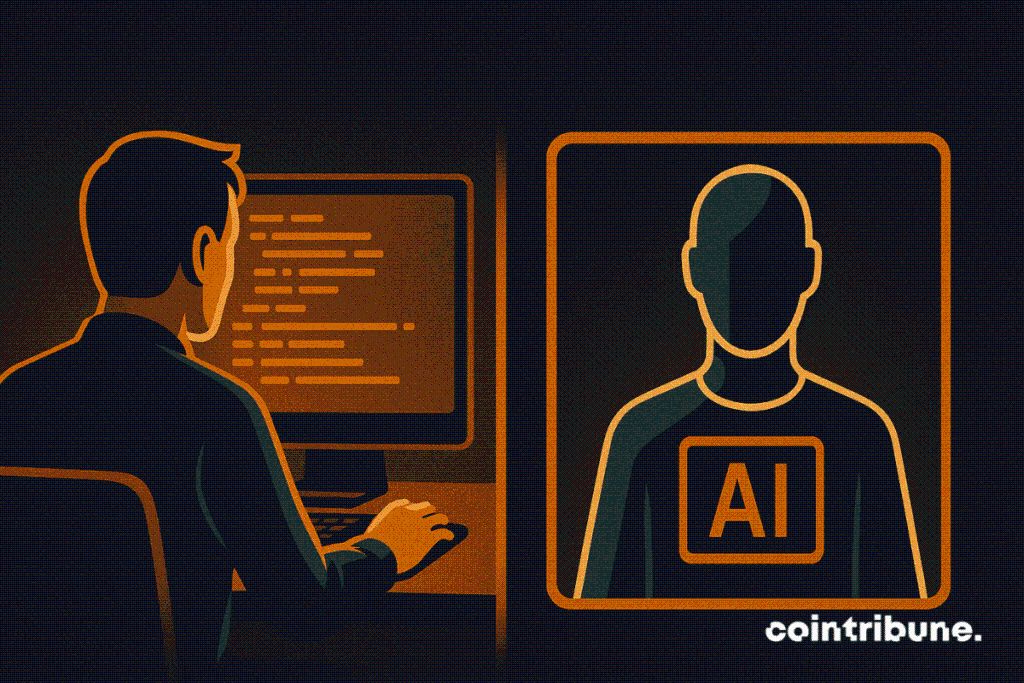90% of coders use AI, but consider it unreliable
According to the Google Cloud DORA 2025 report, 90% of developers now integrate AI into their daily lives. However, less than a quarter of them actually trust its results. Between increased productivity and persistent skepticism, the industry navigates a paradox.

In brief
- 90% of tech professionals now use AI in their daily work, an increase of 14% in one year.
- Only 24% of developers actually trust the results produced by these tools, according to Google.
- 46% of developers actively distrust AI accuracy, compared to only 33% who trust it.
- This massive adoption hides cautious use where every generated line of code must be verified.
AI usage is booming among developers despite growing distrust
The Google Cloud DORA 2025 report, published Wednesday, paints an irrefutable picture: nearly 90% of developers now use AI in their daily activities, up from 76% in 2024.
Usage covers the entire development cycle, from code generation to debugging, including writing technical documentation.
But behind this massive enthusiasm lies a more nuanced reality: only 24% of respondents believe that AI-produced results are truly reliable.
The study , conducted with about 5,000 engineers worldwide, reveals that developers spend on average two hours a day with AI assistants.
Yet, most treat their suggestions like “spam” content to be systematically checked. This paradox echoes recent Stack Overflow findings, which show distrust of AI rose from 31% to 46% in one year, despite ever-wider adoption.
Even at Google, caution remains the rule. Ryan Salva, head of Gemini Code Assist, admits it’s inevitable to use AI in daily work, but engineers know they must validate every line.
CEO Sundar Pichai, meanwhile, highlights a measurable gain, citing a 10% increase in team productivity due to these tools.
Between dependence and systemic risks
Dependence on artificial intelligence is no longer in doubt: 65% of developers admit to relying heavily on these tools , even without granting them full trust. This paradox reflects an industry that can no longer do without AI, while remaining aware of potential abuses.
Recent security flaws – such as the “copypasta” attacks highlighted by HiddenLayer – show how coding assistants can be weaponized for malicious purposes.
Google tries to regulate this dependence with its DORA capability model. It emphasizes clear protocols, user-centered design, and supervised workflows to avoid uncontrolled AI autonomy. The goal is simple: maximize productivity gains without turning these tools into time bombs.
Beyond engineering, this debate ties into a broader concern. As other surveys have shown, Americans themselves see AI as a useful but dehumanizing tool , fearing it erodes creativity and social bonds. The software industry is no exception: developers regard AI as a brilliant but unpredictable colleague.
In short, AI is now a must-have for developers. However, widespread distrust highlights a major challenge: building a digital future where these technologies are not only used but also deemed trustworthy. For now, AI remains an indispensable ally … under close watch.
Disclaimer: The content of this article solely reflects the author's opinion and does not represent the platform in any capacity. This article is not intended to serve as a reference for making investment decisions.
You may also like
Ethereum News Update: The Dangers of Leverage: Crypto Whale Suffers $26 Million Loss Amid Market Decline
- A crypto whale lost $26.348M by partially liquidating 15x leveraged BTC and 3x leveraged ETH positions amid declining prices. - The whale's $250M portfolio faces $3.734M unrealized losses if liquidated, with a $65,436 WBTC liquidation threshold. - Broader market trends show $260.66M ETH ETF outflows and ETH/BTC prices below $2,800 and $87,000, worsening leveraged traders' risks. - A HyperLiquid user lost $4.07M from a 6x ETH long position, reflecting systemic leverage challenges as macroeconomic factors

Bitcoin Updates: U.S. Market Pessimism Contrasts with Asian Confidence as Bitcoin Drops Near $85,000
- Bitcoin's price fell to $85,000 in Nov 2025, down 7% in 24 hours and 20% monthly, driven by dormant wallet sales and bearish derivatives bets. - Surging sell pressure from inactive wallets and rebalanced derivatives toward puts highlight deteriorating market structure and liquidity. - Fed rate-cut uncertainty and regional divergences—U.S. bearishness vs. Asian buying—exacerbate volatility amid $565M in liquidations. - Analysts split on recovery: some see consolidation near $85K-$100K, others warn of a po

Aave News Today: Aave’s High-Return Application Offers a Solution to Inflation’s Impact on Savings
- Aave , a top DeFi lending protocol, launched a consumer savings app offering up to 9% APY, competing with traditional banks and fintech platforms. - The app targets mainstream users with zero minimum deposits, real-time compounding, and $1M balance protection, aiming to simplify DeFi accessibility. - While outperforming traditional savings rates, Aave's insurance transparency and security history raise concerns amid crypto's volatile trust landscape. - This move reflects DeFi's neobank trend, with high-y

The PENGU USDT Sell Alert: Is This a Red Flag or Simply a Market Adjustment?
- PENGU USDT's sell signal highlights concerns over structural risks in stablecoin-backed crypto strategies amid volatility and regulatory shifts. - The token's 28.5% decline since October 27, coupled with weak technical indicators, reflects broader fragility in algorithmic stablecoins and leveraged positions. - Growing institutional adoption of asset-backed alternatives like USDC contrasts with PENGU's speculative NFT-driven model, which lacks robust collateral or compliance. - While Fed policy easing may
